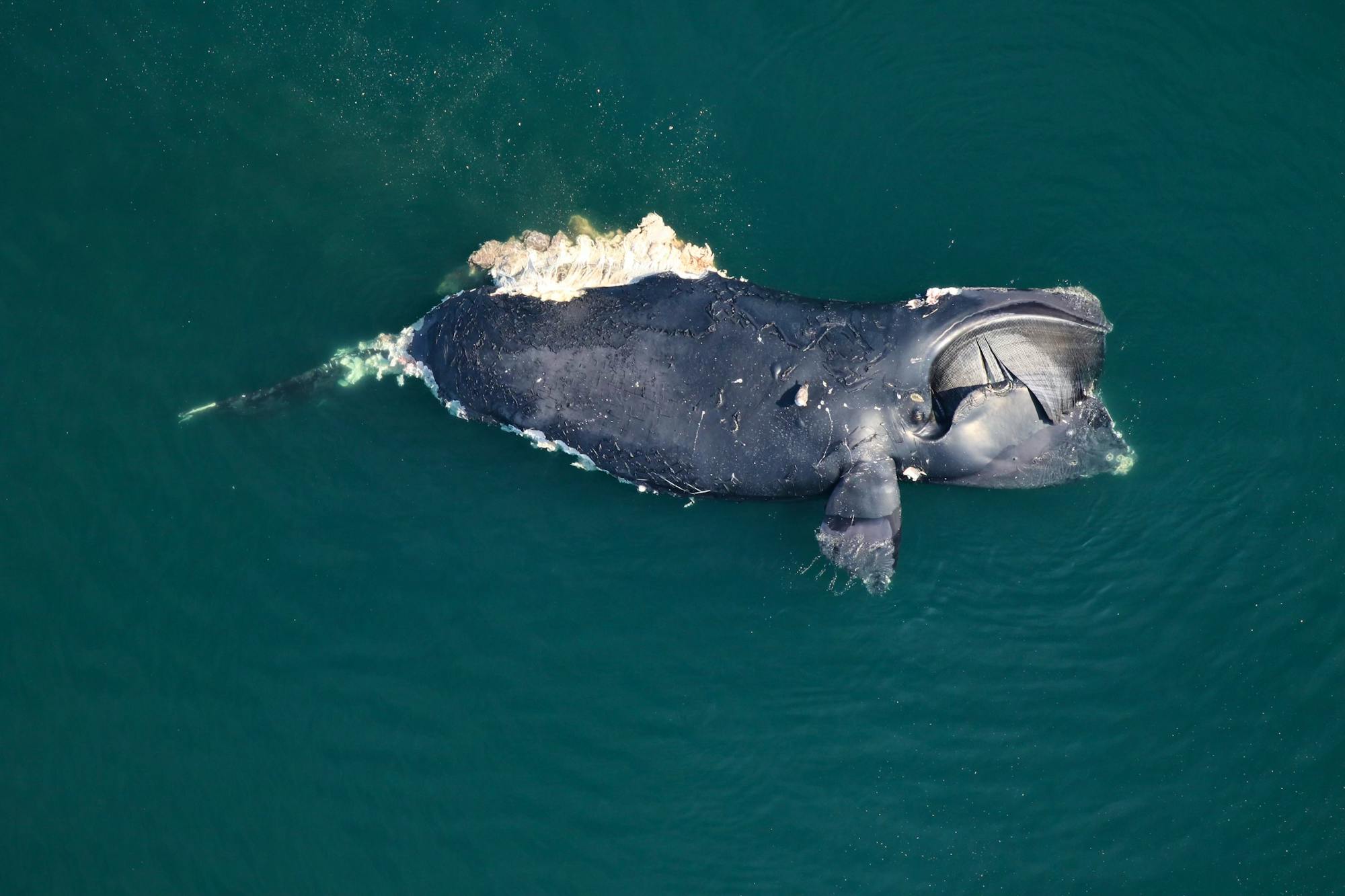In today’s blog, we are pleased to share a recent op-ed in Portland Press Herald that explains the ongoing struggle North Atlantic right whales face and how a proposed expanded vessel speed rule would help lower the risk of fatal strikes.
We’ll likely never know the full story of what happened to North Atlantic right whale #1950, an adult female last seen with her newborn calf — but we know how her story ended. It’s a conclusion written down the length of a dislocated spine, a final chapter scrawled in fractured vertebrae.
We know, too, how the story began — with a vessel crossing the North Atlantic at speeds that spell death for a right whale when the two collide. #1950 was found dead off the coast of Virginia in late March, her story ending like those of too many right whales, including three more in early 2024. The locations vary, as do the horrific wounds leading to grim ends, but the vessel strike story describes a pervasive threat to the life of every right whale, and to the very existence of the critically endangered species.
When #1950 was found, aerial photos showed her body ravaged by feeding sharks, but all they had done was take advantage of a meal left floating by human activity. The necropsy showed #1950 died with vertebrae down her lower back split halfway through like logs struck by an axe — the kind of injury only a vessel collision causes. NOAA Fisheries called these injuries “catastrophic.”
The catastrophe doesn’t stop with one whale. #1950 was a mother, seen with her sixth documented calf just a month before a vessel strike ended her life. Her calf wasn’t seen anywhere in the vicinity of its mother’s body. Without her, it cannot nurse and thus cannot survive. What’s worse, at only around 35 years old, #1950 had many years ahead of her to calve. It’s not only this year’s calf that’s been lost to the population, but all her future calves as well.
In the modern era, not a single adult right whale death has been shown to stem from natural causes. Whether from a vessel strike or a fishing gear entanglement, every adult right whale found dead has been brought to its end by human causes.
In one specific way, #1950 was lucky — her death was likely almost immediate. Some whales who endure vessel strikes suffer for months before being overtaken by their injuries. Earlier this year, a newborn calf died two months after being struck by a boat propeller, having suffered cuts deep into soft tissues and bone. Since 2017 alone, NOAA Fisheries has reported 15 documented right whales killed by vessel strikes. Two more are seriously injured and unlikely to survive, and another four have been non-lethally wounded. Those are just the ones we know about. As many as two in three right whale deaths go undocumented altogether and right whales show up with new scars every year.
Prolonged suffering is also the story for victims of fishing gear entanglements, like #5120 — a three-year-old female whose body washed ashore on Martha’s Vineyard in January. She was found with Maine lobster gear embedded deep in her tail, her body thin and frail from the exertion of dragging heavy gear around until it became too much. She was born in January 2021, first seen entangled in August 2022, and spent 18 months — fully half her life — in pain. Of the 79 known entanglement cases since 2017, nine are mortalities; 30 are seriously injured and not likely to survive because of their unwanted cargo; and a whopping 40 have suffered painful injuries and illness. Entanglements also affect female health and welfare so extensively that the natural birth rate has plummeted.
Another right whale, #4143, was spotted entangled earlier in April, living with that same pain every day.
When a right whale dies, we know how its story ends, but the same doesn’t need to be said for the species as a whole. A proposed expanded vessel speed rule would, if finalized, mandate slower speeds for more vessels crossing right whale habitats — lowering the risk of fatal vessel strikes altogether. Advocates are also fighting for the adoption of innovative fishing gear technologies that could rewrite the narrative of right whale lives by reducing their risk of entanglement. The Biden administration has the chance to decide whether the story of the North Atlantic right whale ends in a denouement with no survivors, or continues into a new volume of redemption, protection and recovery.








Follow Defenders of Wildlife
facebook twitter instagram youtube tiktok threads linkedin